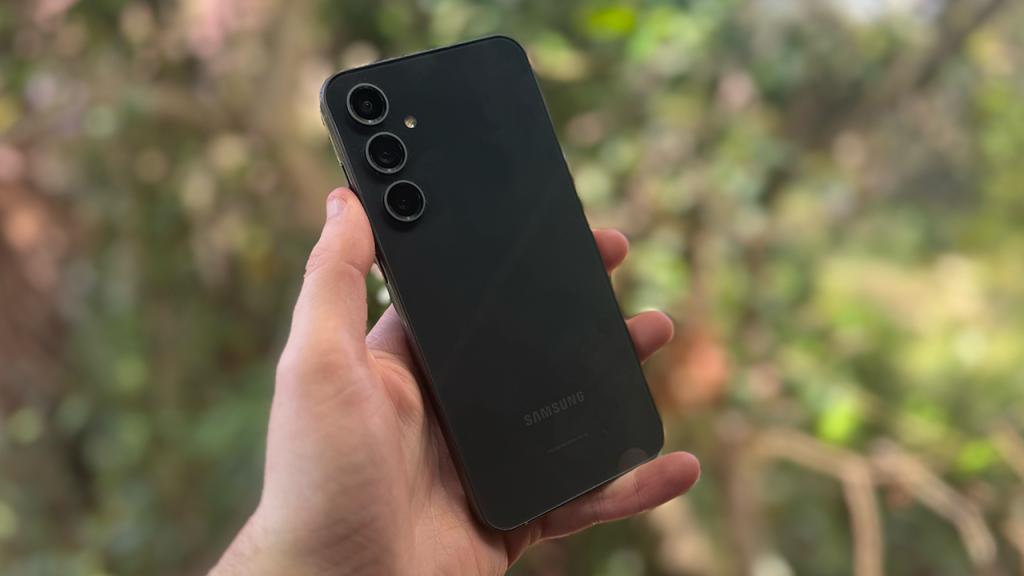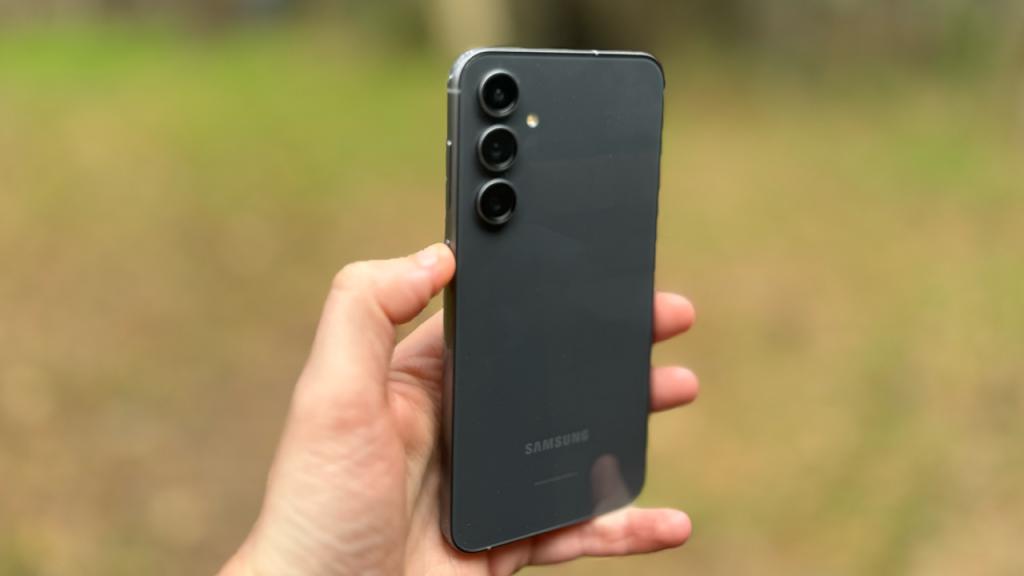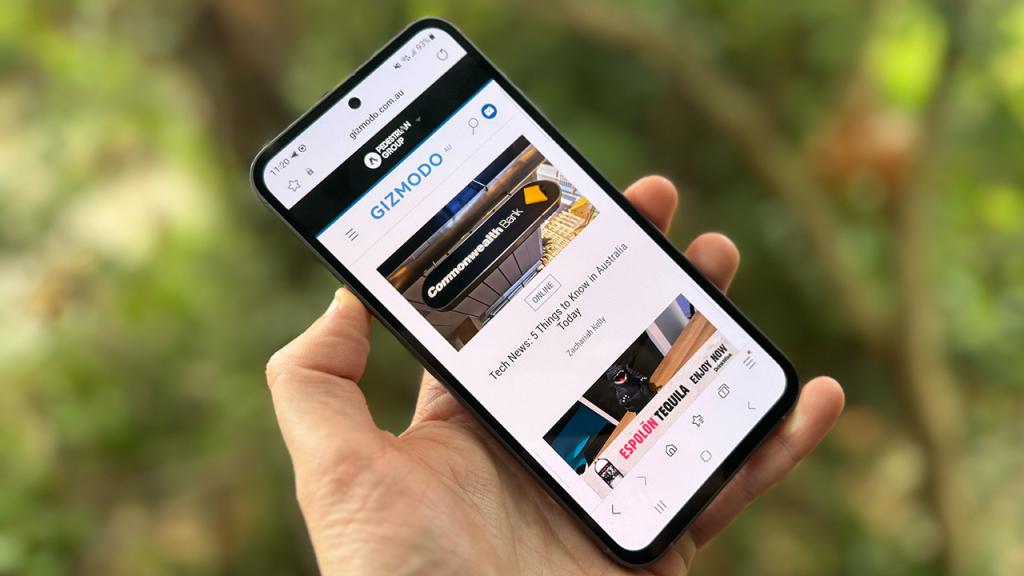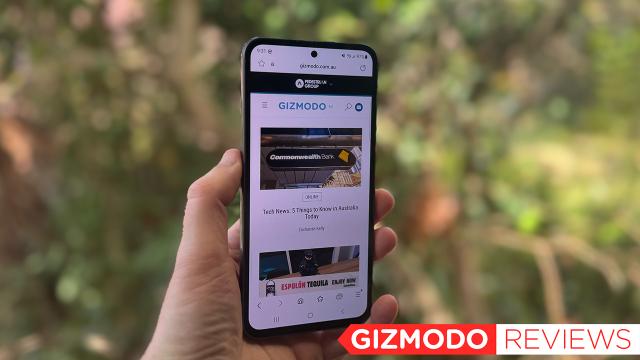Hang on, didn’t Gizmodo already review the S23 FE? Yes, that happened – but the model you can buy in Australia is different in a couple of profound ways.
Samsung’s FE line of phones straddles the price space between its actual flagship Galaxy S phones – like the upcoming Galaxy S24 family – and its more affordable A series fare. FE in this case stands for “Fan Edition”, and I’ve never really understood why, because I would presume fans might be the very folks who would pay more for Samsung products, what with being fans and all.
But still, a few phones – and a few tablets and headphones later – here we are.
I’ve been testing out the Samsung Galaxy S23 FE for the past little while for a review elsewhere, and there’s already a US Gizmodo review of the Galaxy S23 FE on site that you can read right here.
Indeed, you should read it; it’s a good review of most of what makes the Galaxy S23 FE tick. Much of what I’m about to write below is essentially additional to that review.
However, there’s a bit of a catch here, because the phone that Gizmodo US’ Kyle Barr reviewed isn’t the phone that’s been on my test bench for the past week.
Not just that it’s not the same physical unit – that would be downright weird – but because Samsung’s done something with the Galaxy S23 FE that it hasn’t commonly done with its premium phones for some time here in Australia.
I might even go so far as to say that they’re almost different phones, and it’s well worth knowing what those differences mean if you’re considering the Galaxy S23 FE as your next handset.
Galaxy S23 FE Design & Camera: So far, so familiar

There’s absolutely nothing of note that’s different about the Australian models to the US models in design terms, though while Kyle found the S23 FE a tad on the smudgy side, I’ve had more of an issue with it being a slippery little critter. That’s not unusual at all for larger phones without cases, however.
Sorry, Samsung, but your pretty Galaxy S23 FE’s slipped off my desk more than once while I’ve been testing it. Thankfully so far without issue – the carpet in my home office is soft enough to absorb its fall, it seems – but if you were keen on the S23 FE, I’d very strongly advise buying a case for it just to cut down that lack of friction a tad.
OK, I always suggest everyone put cases on phones, because it makes zero sense to me not to do so, but in this case the risks of accidents do feel rather more pronounced than on many other handsets.
On the camera front, I think I like the S23 FE’s range of lenses a little more than US Kyle did, but then I’m a big fan of simply having more lens and framing choices, and that’s what you get with any phone that combines a wide, ultra-wide and telephoto lens. You just have more choices when it comes to your artistic intent, and I’m never not going to think that this is a good thing… mostly.
The one caveat there is that, like the bigger S23 family of phones, the telephoto chops of the S23 FE are accentuated with Samsung’s “Space Zoom”. That’s Samsung’s fancy term for hybrid digital cropping for the most part, up to 30x zoom specifically.
30x zoom sounds all kinds of wild and impressive, but the reality – as it is with the higher end Space Zooms on Samsung’s pricier Galaxy S phones – is considerably more mundane.

You would be better off shooting at a lower zoom – 5x up to 10x seems to work OK – and then cropping yourself in post-processing.
Galaxy S23 FE: Underneath The Hood: What Do We Have (And Why?)

The big difference between the Galaxy S23 FE as sold in the US and the model sold in Australia lies beneath its glossy shell. Buy a US model, and you get a Qualcomm Snapdragon 8 Gen 1 processor, basically the flagship processor found in Samsung’s Galaxy S22 line. That’s not bad, though, because a premium flagship processor should be good for speed for a good few years of real world usage.
Were I to crack the Galaxy S23 FE sitting on my desk right now open with a hammer, I’d get a very cross phone call from Samsung Australia for shattering their nice new shiny loan phone… but I also wouldn’t find a Qualcomm Snapdragon 8 Gen 1 at all.
I’d find one of Samsung’s silicon babies, specifically the Exynos 2200. It’s been a while since Samsung went down the route of offering up an Exynos alternative version of one of its flagship phones here, but it’s a move that I’m no stranger to. For a long while, when it was time for a new generation of Samsung Galaxy S phones to debut, the models we’d see down under were running on Exynos processors while international models – typically the US ones – had that year’s flagship Qualcomm processor.
So what’s the difference?
Historically, what I used to find with the Exynos model was that it ran a little slower than the comparable Snapdragon model, and a lot of independent testing tended to verify that.
Now, this is tricky, because I don’t have both the Exynos 2200 variant and the Snapdragon 8 Gen 1 variant of the Galaxy S23 FE to test with, because it’s not like Samsung sells both locally. However, I do have a lot of experience with Snapdragon 8 Gen 1 phones – including Samsung’s take on how to best utilise their power.
At a benchmark level, using Geekbench 6’s CPU test, for example, the Galaxy S23 FE scores 1601 for single core and 4003 for multi-core operation. Solid scores, but comparing them against Snapdragon 8 Gen 1 phones (including some, like the Motorola Thinkphone that you can get for the exact same price as the S23 FE), it’s not so shiny; I tend to see scores of around 1800 single core and 4800 for multi-core operation. That’s a solid kind of gulf, and it is one that does have a degree of impact on performance.
Now, this does get somewhat subjective, and I do have to dive into my own extensive experience here when writing about it. I am not saying that the Galaxy S23 FE is a slow phone, and for a number of consumers at this price point, it will well and truly be fast enough.
However, compared to what I get in perceptible performance terms from a Snapdragon 8 Gen 1 phone, there’s a noticeable dip in responsiveness.
It’s not bad… but it could be better, and this is compounded by the fact that we know that the S24 family is coming in.
Rumours suggest it may end up with its own FE model, but that’s still up in the air. It would be truly wild for Samsung to launch one FE model and then turn around three months later and launch an updated one, so if it happens, I suspect that wouldn’t be until around this time next year anyway.
The bigger challenge for the S23 FE here is that when the S24 is announced – and probably just before it happens, and remember that’s likely in the January to February 2024 timeframe, which is only a few weeks away now – the prices on S23 stock will drop markedly, even if not officially from Samsung.
It’s not uncommon to see prior model Android phones slice prices markedly when a new model is on the horizon, and it wouldn’t take much to bring the base model Galaxy S23 into the price orbit of the S23 FE.
The Galaxy S23 runs on a Qualcomm Snapdragon 8 Gen 2 processor, even faster and more efficient than the Snapdragon 8 Gen 1. The comparisons there are not going to be flattering to the Galaxy S23 FE.
A Slower Phone Isn’t Always Bad

There is a silver lining to all this talk of slower processors, however.
You see, the one good thing about all those older Samsung phones with Exynos engines under the hood was that while they were slower, they were also slower to sap their internal batteries. The US experience with the Galaxy S23 FE certainly seems to suggest that its battery life wasn’t superb, with Kyle noting that “the battery seems to wane faster than what I’m used to on other devices.”
That’s not been my impression of the Galaxy S23 FE Exynos 2200 variant, which has generally been very good. Here, while again I don’t have both exact devices to hand, I can bring a little benchmarking into play to show a likely kind of comparison.
One of the battery tests I run is a simple affair streaming a 1080p YouTube video for an hour from a fully charged battery. It’s not a battery exhaustion test, but a simple way to gauge relative battery performance, as well as to flag with me if a phone is likely to struggle in more in-depth testing. If you can’t manage an hour of YouTube without dropping below 90%, you’re probably going to struggle to last out a full day’s usage.
On that test, the Galaxy S23 FE with the Exynos 2200 managed a very respectable 95% remanining. Not the best I’ve ever seen out of a Samsung phone, but up there in the upper echelon.
The Qualcomm Snapdragon 8 Gen 1 was also found in the Samsung Galaxy S22, and that’s a phone that I did run through that test last year, back when the S22 was the new kid in town. At that time, and with the same test, the Galaxy S22 dropped to 91%, just above my barrier for worrying about general battery performance.
A grand total of four per cent might not seem like all that much, but at that level it can add up to an hour or more of battery life at the end of the day – and that’s an extra hour for you to get in range of a charger or battery pack to keep your phone fun going.
Should You Buy The Galaxy S23 FE In Australia?
It depends. It’s a decent device for the money, and it’s fairly easy to see where it sits in the grand Samsung scheme of things if you’re a particular fan of the brand. Anecdotally, one friend of mine picked one up in the recent Black Friday sales at a tasty discount, and he’s thrilled with it.
However, it is worth bearing in mind that the Australian model isn’t as computationally powerful, and you do need to balance that against your likely usage and its likely better battery life.
I’d also consider when you’re planning to pick one up, because as we get closer and closer to the launch of the S24 series, we’re likely to see bigger bargains on the S23 family of phones – and they’re very much better handsets by design.
